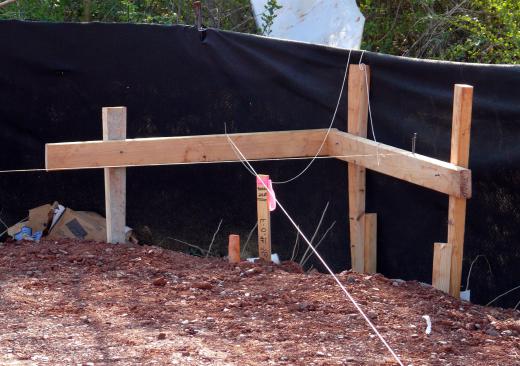Trenches can be excavated for many different reasons, such as to create drainage systems or lay down cable lines. The best methods for trench excavation generally depend on factors such as the specific purpose of the trench, its size, and the type of material that needs to be dug through. Some projects will require a very deep trench, which can mean that heavy machinery will have to be used. Others will require only the use of a shovel. In all cases, safety is always an important part of the excavation method.
A trench is not just an ordinary hole in the ground. It is typically distinguished by two factors, narrowness and a depth that is greater than the width. Trenches have many different applications. They can be used in combat situations, or to house electrical cables and power lines. Trenches can also be formed by nature, most often by the movement of water, which can cut into the landscape.

For home and lawn-care purposes, the tried and tested method for trench excavation is a shovel. There are, however, lawn-care trench digging machines available on the market. These are usually walk-behind models that can dig a trench at a specific depth and width. They may be motorized or manually-operated.
For bigger projects, careful planning can be an important part of trench excavation methodology. This includes thinking about factors such as the precise location of the trench and its length, width, and depth. An important part of the planning process is also being familiar with the land to be excavated, as this can help prevent hitting any underground pipes or building foundations when digging.
The type of material that is to be dug up can also affect the trench excavation method. For example, sandy, loose, and muddy soils are generally more difficult to dig. Constructing these types of trenches may require special safety measures, since these soils can be more susceptible to cave-ins because of their lack of solidity.
Heavy-duty trench excavating machines can be used in major excavation projects. This includes machines such as rockwheel and chain trenchers. Rockwheel trenchers are typically used to dig through concrete and asphalt. They incorporate a digging implement that features a toothed metal wheel. Chain trenchers resemble a type of giant chainsaw and are also used for cutting through hard materials.
The best methods for trench digging are usually the safest methods. Industrial excavations are recognized by some safety boards as one of the most dangerous type of construction project. This is because of the risks of cave-ins and workers falling into trenches.
Following standard excavation methods can help ensure the safety of workers. For example, shoring is a common type of safety measure that incorporates a support structure on the sides of the trenches to prevent it from caving in. Plywood posts, sheet tiling boxes, and steel boxes are common types of material used for shoring.
